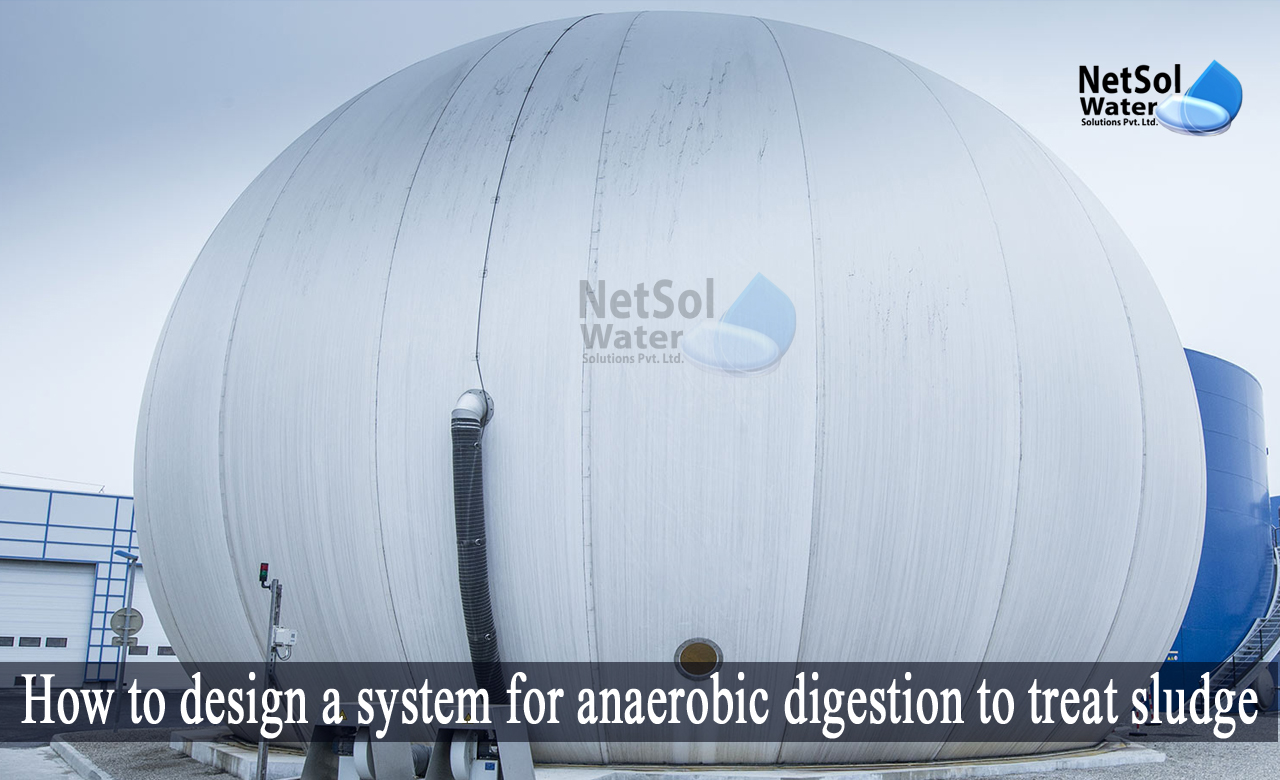Introduction
The most popular method for stabilizing sludge is anaerobic digestion (AD). In the absence of air, AD organically stabilizes the sludge. By converting them into a biogas, it lowers the amount of volatile solids.
The methane portion of the biogas therefore necessitates additional processing, for recovery and reuse. Similar to the solids product produced by lime dosing, the stabilized solids products can be utilized for soil conditioning.
How to design a system for anaerobic digestion to treat sludge?
Systems for anaerobic digestion (AD) can be created as:
1: The process can be carried out in a single tank or several, in a stirred or unstirred system, and at either moderate (mesophilic) or high (thermophilic) temperatures.
2: Other reactor configurations include up-flow anaerobic sludge blankets (UASB) and continuous stirred tank reactors (CSTR). In the "dry" mode, the sludge can be fed either as granules or a powder or as slurry in the "wet" mode.
3: The tanks can be either egg-shaped or cylindrical. Superior hydraulics offered by egg-shaped reactors lower the necessary mixing intensity.
4: The entire biochemical degradation procedure is carried out in a single reactor, during a single tank process. Each reactor in a multi-tank process is dedicated to one or more particular stages, of the degrading mechanism.
5: The multi-tank method of anaerobic digestion enables better control of the biological process, particularly through the pH. The ideal pH range for acetogenesis and acidogenesis is often between 5.5 and 6.5. Within this pH range, methanogenic bacteria do not grow or reproduce as quickly, as organic acid-producing microorganisms. On the other hand, methanogenesis works best in the pH range of 7.8 to 8.2.
6: Careful pH control is necessary for operation in a single tank to guarantee that all biochemical processes, can proceed simultaneously. This suggests a pH range of 6.8 to 7.2 as being ideal, while the process can work with a range of 6.5 to 8.0.
7: Unstirred tanks are more straightforward to construct and use, but they can only handle slow loading rates and lengthy hydraulic retention times (HRTs). As a result, unstirred systems employ larger tanks than stirred systems do. On the other hand, due to their smaller size, stirred tanks—tanks that use mixing—are typically preferred for big sludge flows in particular.
Stages of Anaerobic digestion
AD procedures that use mixing have two stages:
A primary digester that mixes everything thoroughly is followed by a secondary digester, where the digested sludge and supernatant are separated.The product gas stream is created by combining the biogas produced, during the two processes.
Recirculating pressurized biogas through diffusers at the tank base, jet mixing, or mechanical mixing with impellers, are all possible methods of mixing.
More heating is required for thermophilic operation (49–57°C ideal range) than for mesophilic operation (30–39°C ideal range), but the biochemistry proceeds more quickly. This implies that the tanks are smaller and the HRT is lower.
Netsol Water is Greater Noida-based leading water & wastewater treatment plant manufacturer. We are industry's most demanding company based on client review and work quality. We are known as best commercial RO plant manufacturers, industrial RO plant manufacturer, sewage treatment plant manufacturer, Water Softener Plant Manufacturers and effluent treatment plant manufacturers.
How can we assist?
Netsol Water offers you practical solutions for effective sludge waste and wastewater management. In order to recycle solid waste, we manufacture a wide variety of solid waste recyclers, green waste recyclers, organic waste converters, and much more.
We also manufacture a wide variety of STPs, ETPs, and WTPs, based on advanced technologies. Sludge is also maintained using anaerobic digesters. Contact our experts today for additional information on how you can manage your wastewater and sludge.
Apart from this 24x7 customer support is our USP. Call on +91-9650608473, or write us at enquiry@netsolwater.com for any support, inquiry or product-purchase related query.



